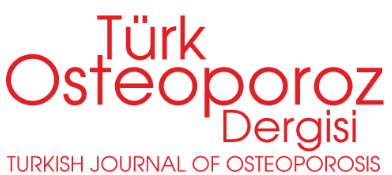ABSTRACT
Aim:
To investigate the quantitative ultrasound measurements and determine the related demographic, clinical and life style parameters.
Material and Methods:
A questionnaire including demographic features, systemic diseases, physical activity levels and other risk factors for osteoporosis was completed. Measurements of quantitative ultrasound (QUS) were performed. Speed of sound (SOS) (m/sec) measurements were taken at the distal 1/3 radius of the nondominant extremity.
Results:
Among 2347 persons whom QUS measurements and questionnaires were completed, those aged 35 years and older and that were not taking antiosteoporotic treatment (N= 1867; 1654 women, 213 men) were included for the analysis. Mean age of the participants were 52.1±10.7 years and mean SOS scores were 4142.8±185.8 m/sec. The variables that were statistically significant in either independent samples t test or analysis of variance were put in the linear regression analysis. In women, age, years since menopause and duration of lactation were independent predictors for SOS scores (constant= 4367.9 m/sec, age B: -3.8, ß: -0.197, p: 0.01; years since menopause: B: -3.9, ß: -0.211, p: 0.006; duration of lactation B: -0.4, ß: -0.086, p: 0.037). In men, age and level of education affected SOS scores independently (constant= 4271.3 m/sec, age B: -3.8, ß: -0.277, p: 0.001; level of education: B: 18.8, ß: 0.144, p: 0.036).
Conclusion:
Increasing age is associated with decrements in speed of sound measured by quantitative ultrasound at distal radius. It is important to give education about preventive measures on bone metabolism, especially during the lactation period. (Turkish Journal of Osteoporosis 2011;17:1-5)



